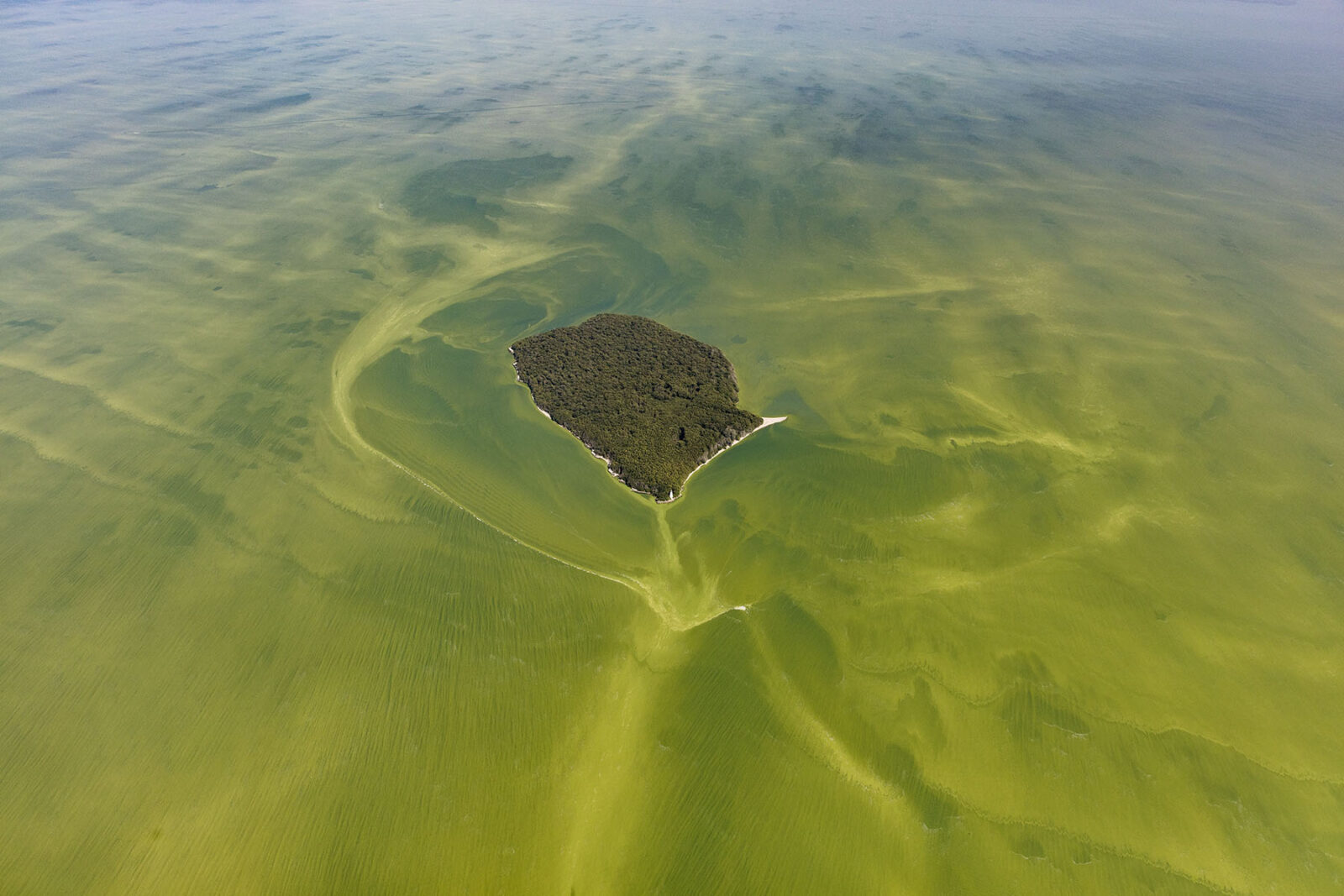We have much more to do and your continued support is needed now more than ever.
Taking Stock of the Algal Soup

I’ve been sailing on Lake Erie for over twenty years, which incidentally coincides with the reemergence of toxic algal blooms. I’ve seen algal blooms large and small, of varying degrees of density and also toxicity. In those two decades, I’ve seen dollars and brainpower invested in understanding seasonal patterns, forecasting bloom size and concentrations, and tracking toxicity. Understanding the science of harmful algal blooms is like knowing the ingredients for a recipe—we need to know what makes the soup of harmful blooms so we know what to adjust to get the recipe right for a clean Lake Erie. But even though we know the ingredients that make the blooms, where are we with the remedy? Are we any closer to fixing the algal soup of toxic blooms in Lake Erie? The answer is: not yet.
Algal blooms vary with spring and summer weather patterns: large amounts of rainfall in the spring result in larger blooms, while summer wind and currents can concentrate blooms of any size, leading to increased toxicity. The primary driver is phosphorus, an important nutrient in growing crops. But too much of a good thing has been disastrous for Lake Erie. While phosphorus is critical for crop production, it also feeds the algae that can become toxic. As the shallowest of all of the Great Lakes, Lake Erie is the most susceptible to environmental change of any kind.
Over the past twenty years, much has been invested in understanding not only the science behind what’s driving the blooms but also strategies to reduce them. Scientists and engineers have developed monitoring and treatment technologies needed to protect drinking water for millions of people who rely on Lake Erie. Further research has investigated the runoff from those spring rains, monitoring everything from how and why the nutrient phosphorus leaks off of farm fields to what happens once it reaches the lake. The research and science communities have come together to ask the right questions, collaborating on the best and most expeditious responses. Our public agencies have also responded with the development of tools for measurement and public access to information. Collectively, these groups have developed plans—“recipes”—to control phosphorus runoff, the most important ingredient in the toxic algal soup.
Phosphorus and Farmlands
Phosphorus runoff happens when it “leaks” off agricultural fields. The Maumee River Basin in northwest Ohio (and smaller areas of Indiana and Michigan) delivers the majority of phosphorus to Lake Erie. And the Maumee River Basin is more than 80% agricultural land. But the reasons for why phosphorus leaks are complex are not all fields leak phosphorus, and not all fields leak phosphorus in the same ways. The exact remedy is unique to the individual farm, essentially requiring a unique recipe for each farm operation. Scientists and public agencies agree: keep the nutrients and sediment on the fields, don’t let it runoff into nearby waterways, and we can expect a reduction in blooms.
But we aren’t quite seeing those results yet. While some years we experience smaller blooms, that is simply a consequence of rainfall. When scientists adjust for variable rainfall from year to year, the concentration of phosphorus in the water has not changed.
Patience and Practicality
The solution might be time. Some experts say we simply need to give it time: the conservation practices we’ve implemented will eventually slow down phosphorus runoff. But other scientific analyses indicate that we need to dramatically increase the scale and pace of conservation practices to make a difference, given the specific needs of individual farms and the buildup of phosphorus in the soils.
A current project is evaluating the role of phosphorus that has built up in the soil profile for decades, often referred to as legacy or simply ‘old’ phosphorus. These areas are not widespread and are usually zones within fields and not the entirety of a given field. The higher the level of phosphorus in the soil, the greater the risk of phosphorus leaking off that field. For these specific areas, a more targeted approach is needed. By identifying these specific areas and treating them first, we can accelerate progress toward reduction. Additionally, new technology like phosphorus filters capture off-field runoff at the source, protecting watersheds.
Widespread Won’t Work
As convenient as it would be, unfortunately, one size doesn’t fit all when it comes to phosphorus and harmful algal blooms. Widespread approaches with current programs are simply not enough to reduce the amount of phosphorus entering Lake Erie. We’re going to need to get much more granular with our policies and programs, essentially changing the recipe by adding more steps and new ingredients to find the leakiest fields and the specific mixes to get a better outcome.
In 2023, the State of Ohio, the State of Michigan, and U.S. Environmental Protection Agency are initiating an update to the Domestic Action Plan for Lake Erie, a plan required under the binational agreement with Canada, the Great Lakes Water Quality Agreement. To date, the Plan has relied on current programs, including the highly valued H2Ohio program to fulfill its commitment to phosphorus reduction. But we need more. Legislatures budget funds for public agencies, limiting what they can include in their plans. But this updated recipe will need the advocacy of NWF and its partners to call out and call in the targeted tactics needed to meet the goals for Lake Erie. That will take understanding the complexity of the science, and an acceptance of the reality that myriad policy changes will need to coalesce in order to deliver a restored Lake Erie.

But for now, before we go boating on Lake Erie, we check the bulletins issued by NOAA that are a useful guide to where weather patterns have driven the algal blooms so that we can steer clear. As the most susceptible of the Great Lakes to environmental change, we know that once we get the recipe right, we can expect a beautiful Great Lake full of clean water and healthy fish.





















